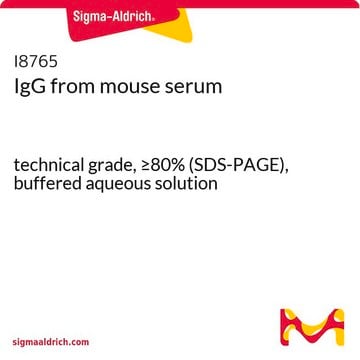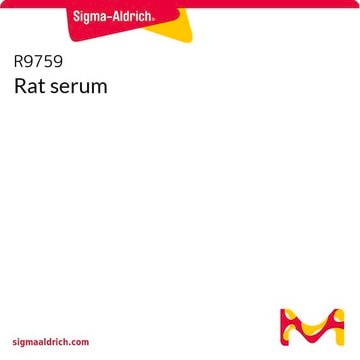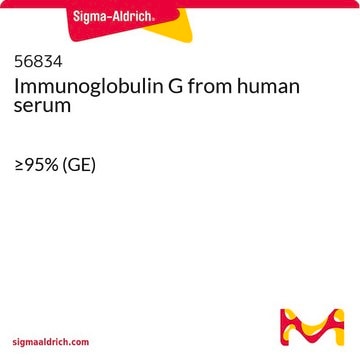I8015
IgG aus Rattenserum
technical grade, ≥80% (SDS-PAGE), buffered aqueous solution
Synonym(e):
Ratten-IgG
About This Item
Empfohlene Produkte
Konjugat
unconjugated
Qualität
technical grade
Assay
≥80% (SDS-PAGE)
Form
buffered aqueous solution
Versandbedingung
dry ice
Lagertemp.
−20°C
Suchen Sie nach ähnlichen Produkten? Aufrufen Leitfaden zum Produktvergleich
Allgemeine Beschreibung
Anwendung
- To block programmed death ligand 1.
- As a control antibody to study the role of integrin b1 in spindle morphology
- In FACS (flow cytometry) staining
- ELISA (enzyme linked immunosorbent assay)
Biochem./physiol. Wirkung
Physikalische Form
Haftungsausschluss
Lagerklassenschlüssel
12 - Non Combustible Liquids
WGK
nwg
Flammpunkt (°F)
Not applicable
Flammpunkt (°C)
Not applicable
Analysenzertifikate (COA)
Suchen Sie nach Analysenzertifikate (COA), indem Sie die Lot-/Chargennummer des Produkts eingeben. Lot- und Chargennummern sind auf dem Produktetikett hinter den Wörtern ‘Lot’ oder ‘Batch’ (Lot oder Charge) zu finden.
Besitzen Sie dieses Produkt bereits?
In der Dokumentenbibliothek finden Sie die Dokumentation zu den Produkten, die Sie kürzlich erworben haben.
Kunden haben sich ebenfalls angesehen
Unser Team von Wissenschaftlern verfügt über Erfahrung in allen Forschungsbereichen einschließlich Life Science, Materialwissenschaften, chemischer Synthese, Chromatographie, Analytik und vielen mehr..
Setzen Sie sich mit dem technischen Dienst in Verbindung.








